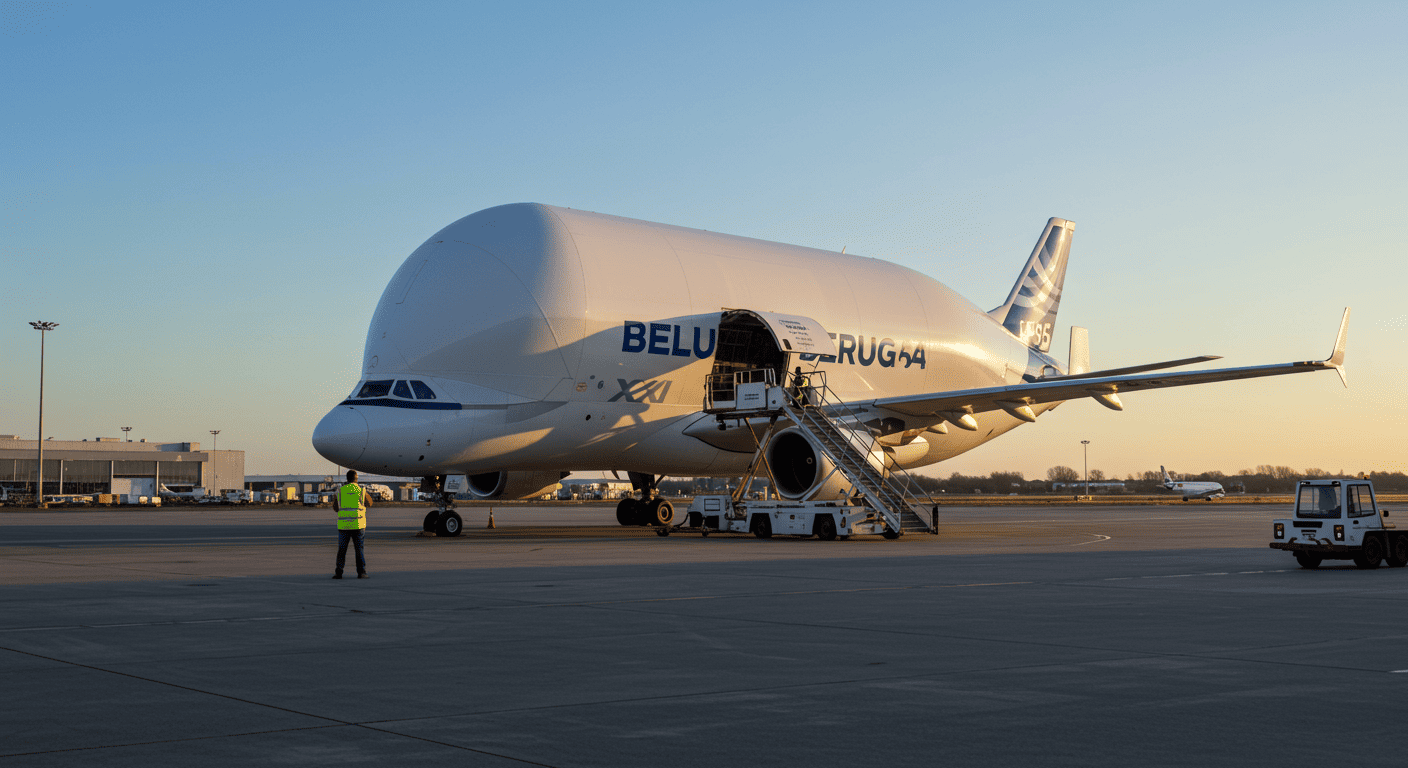With its distinctive whale-like shape, the Airbus Beluga XL is one of the most recognizable aircraft in the sky. Its unique design serves a critical purpose: transporting massive aircraft components between production sites across Europe. This next-generation heavy-lifter offers a 30% greater capacity than its predecessor. Here’s a look at its key specifications.
Airplane engine stands for lease
Overview of the Airbus Beluga XL
The Airbus Beluga XL (officially the A330-743L) was designed for one critical mission: transporting oversized cargo. It ferries massive aircraft components—complete wing sets, entire fuselage sections—between Airbus’s production sites across Europe. Its distinctive whale-like shape and smiling livery make it more than just a workhorse; it’s an icon of modern aviation logistics.
To support Airbus’s production ramp-up, the Beluga XL was engineered with a 30% greater payload capacity than its predecessor. It can haul a maximum of 51 tonnes. This allows it to transport two A350 XWB wings at once—a task that previously required two separate flights.
While based on the A330 platform, the Beluga XL features a heavily modified and widened fuselage to accommodate its massive cargo. Its defining characteristic is a huge, front-opening cargo door, which streamlines the loading and unloading of cumbersome parts. This design, coupled with a 4,000 km range, makes it the perfect link between Airbus’s geographically dispersed manufacturing and assembly lines.
Specifications of the Airbus Beluga XL
Engine and Performance
Powering the Beluga XL are two Rolls-Royce Trent 700 turbofan engines, each generating 71,000 pounds of thrust. This immense power allows the aircraft to cruise at 737 km/h (458 mph) and achieve a range of 4,000 km, even with its maximum 51-tonne payload.
Design Features of the Airbus Beluga XL
The Beluga XL’s specialized design is defined by its cavernous cargo bay. This was achieved by lowering the cockpit and grafting a dramatically enlarged upper fuselage onto the A330-200 airframe.
The sheer scale of the cargo hold is staggering. It measures over 46 meters long, 7.7 meters wide, and 7.9 meters high.
Operational Use of the Airbus Beluga XL
The Airbus Beluga XL is the core of Airbus’s European manufacturing logistics, acting as an airborne conveyor belt to transport oversized components like fuselage sections and entire wings between production facilities and final assembly lines. This is essential for keeping Airbus’s just-in-time production schedule on track, ensuring massive parts arrive precisely when needed.
To meet its production demands, Airbus relies on a dedicated fleet of six Beluga XL aircraft. The first entered service in 2020, with the final aircraft joining the fleet in mid-2024. This completed fleet supports the production ramp-up of models like the A350 by moving more components with fewer flights.
The Beluga XL’s daily operations are defined by efficiency, with short inter-site flights and rapid turnaround times. At each Airbus site, specialized loading facilities work seamlessly with the aircraft’s massive front-opening cargo door to enable swift loading and unloading. This optimized process minimizes ground time and maximizes availability, making the Beluga XL a critical component of Airbus’s industrial strategy.
Sustainable Aviation Practices
The Beluga XL fleet reflects Airbus’s commitment to sustainability. The aircraft use Sustainable Aviation Fuel (SAF) and can operate with blends up to 50% to lower carbon emissions. Furthermore, their operational efficiency supports the production of Airbus’s latest fuel-efficient aircraft, like the A321neo, by ensuring timely component delivery.
Comparison with Airbus Beluga ST
| Feature | Airbus Beluga XL | Airbus Beluga ST |
|---|---|---|
| Base Aircraft | A330-200 | A300 |
| Max Payload | 51 tonnes | 47 tonnes |
| Range | ~4,000 km (2,485 mi) | 1,650 km (1,025 mi) |
| A350 Wing Capacity | Two wings simultaneously | One wing |
| Key Advantage | 30% greater payload capacity | Predecessor model |
Future of the Airbus Beluga XL
As of mid-2024, all six aircraft are in service, making the Beluga XL fleet fully operational. It now forms the backbone of the company’s industrial logistics. The fleet’s completion marks the end of the transition from the original Beluga ST, solidifying the XL’s role as the primary transporter of large aircraft components for the foreseeable future.
The Beluga XL fleet’s immediate mission is to support increasing production rates for Airbus’s key commercial aircraft. Its ability to carry entire A350 wing sets or large A321neo fuselage sections is critical for keeping the assembly lines in Toulouse and Hamburg running smoothly. The Beluga XL’s future is therefore directly linked to Airbus’s manufacturing targets, making it an indispensable industrial asset.
The aircraft is also vital for developing next-generation aviation technology. As Airbus explores innovative designs like the ‘Wing of Tomorrow’ program, the Beluga XL will transport large-scale demonstrators and prototype components, serving as the critical link between research and testing facilities. This capability ensures Airbus’s logistical network can evolve with its technological ambitions, securing the Beluga XL’s relevance for decades to come.
Read more:
- Airbus A320: Specifications, Features, and Seat Maps
- Airbus A340-300: Features, Specifications, and Performance
- Airbus A220: Features, Specs, and Benefits of the A220 Family
- Airbus Beluga: The Unique Transport Aircraft
- Airbus A340-600: Features, Specifications, and Performance
- Airbus A350: Features, Specs, and Innovations
- Airbus A319: Specifications, Seat Maps, and Features
- Airbus A321neo: Features, Specs, and Benefits
- Airbus A321: Specifications, Features, and Seat Maps
- Airbus A380: The Ultimate Guide to the World’s Largest Passenger Aircraft
- Airbus A330-300: Specifications, Seat Maps, and Amenities
- Airbus A350-900: Features, Specs, and Seating Guide
- Airbus A330: Specifications, Features, and Seat Maps

